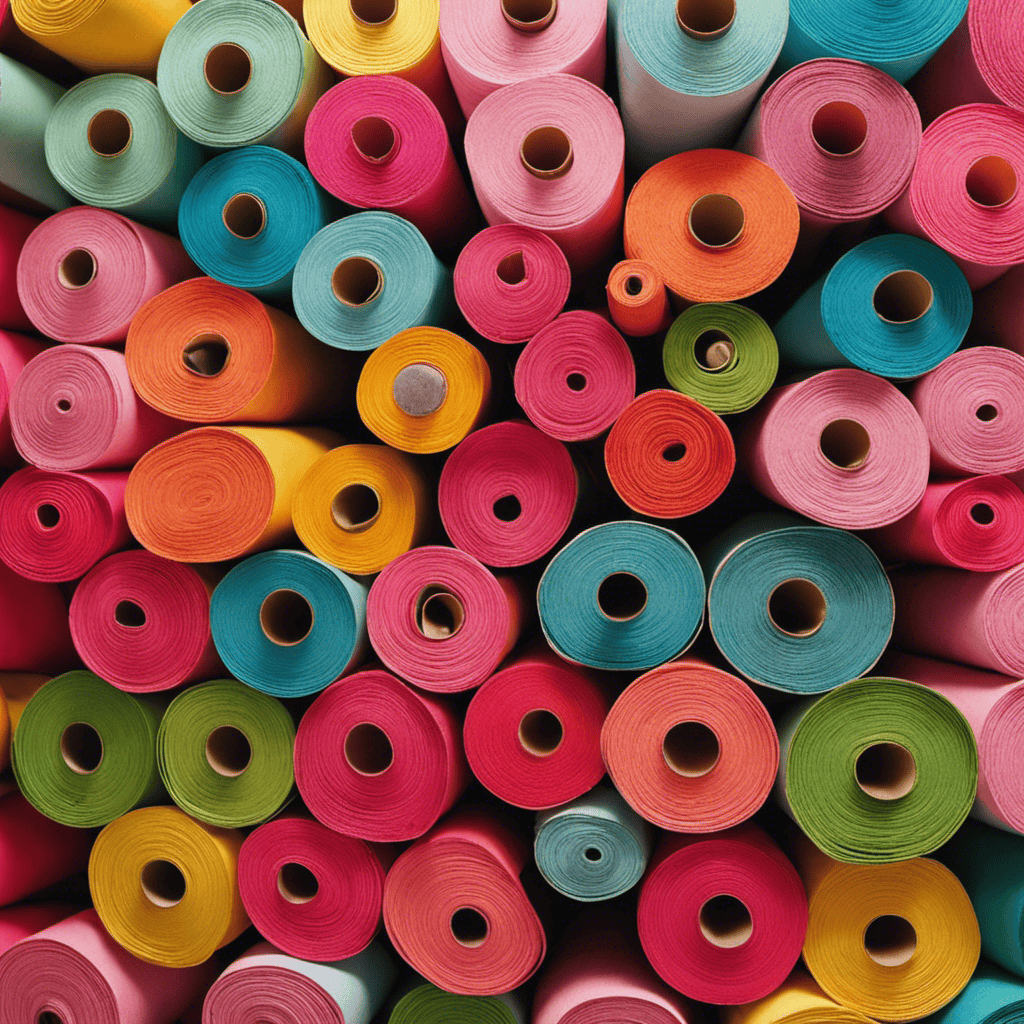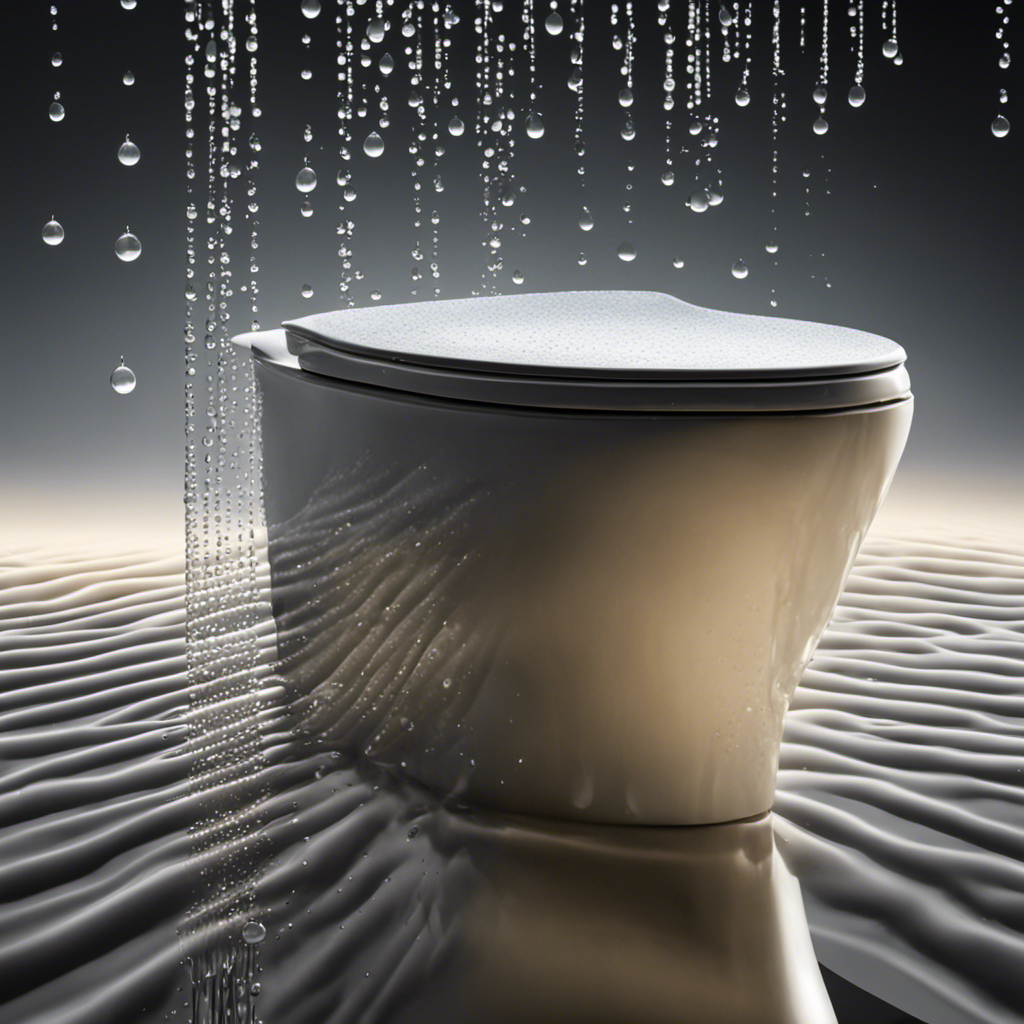As I reflect on the past, I can’t help but wonder: What happened to colored toilet paper? It was once a vibrant trend, adorning bathrooms with hues of pink, blue, and green.
However, over time, it seems to have vanished from our shelves. In this article, we will delve into the historical background, the rise and fall, and the factors that contributed to the disappearance of colored toilet paper.
Join me as we unravel this intriguing tale and explore the shift towards white toilet paper.
Key Takeaways
- Colored toilet paper became popular in the mid-20th century as a way to add color and novelty to everyday life.
- The popularity of colored toilet paper peaked in the 1970s and then declined rapidly due to changing aesthetics and environmental concerns.
- Changing consumer preferences towards minimalist and natural designs, as well as a preference for eco-friendly options, contributed to the disappearance of colored toilet paper.
- The shift towards white toilet paper was influenced by improved manufacturing techniques, its association with cleanliness and hygiene, and its compatibility with a wide range of bathroom decors and color schemes.
Historical Background of Colored Toilet Paper
So, you’re probably wondering why colored toilet paper became popular in the first place.
Well, the cultural significance of colored toilet paper can be traced back to the mid-20th century when it first became available in the market. At that time, people were becoming more interested in adding color and novelty to their everyday lives, and colored toilet paper was seen as a way to do just that. It was considered a luxurious and fashionable item to have in your bathroom, reflecting a sense of style and sophistication.
Additionally, colored toilet paper had a significant impact on advertising. Companies used vibrant packaging and catchy slogans to promote their colored toilet paper, making it a must-have item for households.
However, as we delve into the rise and fall of colored toilet paper, we will see how its popularity eventually declined.
The Rise and Fall of Colored Toilet Paper
Did you know that the popularity of colored toilet paper peaked in the 1970s and then declined rapidly? It’s fascinating to see how consumer preferences can shape the rise and fall of a product. In the table below, I have outlined the factors that contributed to the decline of colored toilet paper.
| Factors | Explanation | Impact |
|---|---|---|
| 1. Changing Aesthetics | As interior design trends shifted towards minimalism and simplicity, colored toilet paper became outdated. | Decreased demand |
| 2. Environmental Concerns | Colored toilet paper was often dyed using harsh chemicals that were harmful to the environment. | Increased preference for eco-friendly options |
| 3. Perception of Poor Quality | Many consumers associated colored toilet paper with lower quality and preferred the traditional white toilet paper. | Decreased sales and market share |
These factors, along with the changing tastes and preferences of consumers, led to the rapid decline in popularity of colored toilet paper.
Factors Contributing to the Disappearance of Colored Toilet Paper
The decline in popularity of colored toilet paper can be attributed to factors such as changing aesthetics, environmental concerns, and a perception of poor quality.
Consumer demand for colored toilet paper has significantly decreased in recent years as people have shifted towards more minimalist and natural bathroom designs. The vibrant hues of colored toilet paper are no longer seen as trendy or stylish, but rather as outdated and tacky.
Additionally, environmental concerns have played a role in the decline of colored toilet paper. Many consumers are now aware of the negative impact of dyes and chemicals used in the manufacturing process, leading them to opt for more eco-friendly options.
Furthermore, there is a perception that colored toilet paper is of lower quality compared to its white counterpart, as it is often associated with cheaper, generic brands. Marketing strategies have also changed, with companies focusing more on promoting sustainability and luxury in their toilet paper products.
As a result, colored toilet paper has gradually disappeared from the market.
The Shift Towards White Toilet Paper: Consumer Preferences and Industry Trends
Consumers’ preferences have shifted towards white toilet paper due to changing industry trends and a desire for a cleaner, more minimalist aesthetic. This change in consumer demand has had a significant impact on the manufacturing process of toilet paper. Here are three key factors contributing to the shift towards white toilet paper:
-
Improved Manufacturing Techniques: Manufacturers have developed advanced techniques to produce white toilet paper more efficiently, resulting in higher production rates and lower costs.
-
Hygiene and Safety: White toilet paper is often associated with cleanliness and hygiene. Consumers prefer it because it gives them a sense of confidence and reassurance.
-
Versatility and Compatibility: White toilet paper is compatible with a wide range of bathroom decors and color schemes. It provides a neutral base that can complement any style or design.
As consumer demand continues to favor white toilet paper, the production and availability of colored toilet paper have declined significantly. This trend is driven by various factors, including the environmental impact of colored toilet paper production.
The Environmental Impact of Colored Toilet Paper Production and Its Decline
You may be surprised to learn about the significant environmental impact and subsequent decline in production of colored toilet paper. In the past, colored toilet paper was a popular choice for many households, adding a touch of color and novelty to the bathroom. However, as environmental concerns and sustainability became more important, the production of colored toilet paper began to decline. The dyes used to color the paper often contained harmful chemicals that were not biodegradable and posed a risk to the environment. Additionally, the production processes required to create the colored paper consumed more energy and water compared to the production of white toilet paper. As a result, many companies and consumers shifted towards more eco-friendly options, contributing to the decline in colored toilet paper production.
| Column 1 | Column 2 | Column 3 |
|---|---|---|
| Environmental Impact | Sustainability | Decline in Production |
| Harmful chemicals in dyes | Energy and water consumption | Shift towards eco-friendly options |
| Non-biodegradable | Environmental concerns | Consumer demand |
Conclusion
In conclusion, the disappearance of colored toilet paper can be attributed to a multitude of factors.
Consumer preferences and industry trends shifted towards white toilet paper, leading to a decline in the demand for colored options.
Additionally, the environmental impact of colored toilet paper production played a role in its decline.
While the historical background of colored toilet paper is fascinating, it is clear that times have changed.
The rise and fall of colored toilet paper is a testament to evolving consumer tastes and a more environmentally conscious society.










